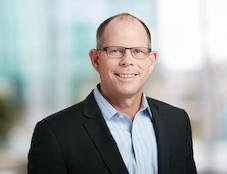
Big bets to meet global goals
One critique we hear a lot: “Why are a couple of unelected billionaires setting the agenda for global health and development?”
Yes, our founders are billionaires. But neither they, I, nor the rest of our board of trustees set the world’s agenda; as a foundation, we respond to it. We are guided by the Sustainable Development Goals, a set of concrete, measurable commitments made by every country in the United Nations to their own citizens.
From those shared priorities, we identify a subset of areas—from improving vaccination rates to advancing women’s economic power—where we have the funds, expertise, and relationships to be part of the solution and where transformational progress is unlikely without our involvement. Geographically, we seek to help those who live in places with a high burden of disease and poverty.
We make all our investments public and strive to be fully transparent about our priorities and strategies. Finally, we find ways to join others who are tackling these challenges and carefully assess the landscape to determine our role. After all, while our payout is large, it’s typically only a small portion of the money the world spends on these issues. So we work with partners to amplify all of our contributions.
To illuminate how we think about our role, let me address our influence through the examples of three of the important priorities reflected in our new budget and our long-term goals: helping smallholder farmers thrive despite the effects of climate change; ending malaria; and helping U.S. schools make math instruction more effective.
Agricultural adaptation: Going all in where the need is the greatest
Malaria: Equipping partners to end the disease
Math education: Raising expectations for engaging instruction
When scores on the U.S. National Assessment of Educational Progress were released in October 2022, we saw the greatest decline in fourth- and eighth-grade math scores ever captured in the test's 50-year history. We didn’t need those scores, however, to know that in too many K-12 classrooms, math is a chore and not a joy—and a proven barrier to high school and even college graduation, especially for Black and brown students.
That’s why we are investing US$1.1 billion over four years to improve the quality of math instruction for all kids.
As a share of U.S. education spending, that’s not a huge amount—only about one-sixth of what’s likely to be spent on public schools in Wyoming, America’s least populous state, over that time. But we hope it will make a big difference nonetheless.
Most educators say the math curriculum they’re given is not engaging, effective, or relevant to their students’ lives. They spend lots of time—of which they have so little—adapting the materials or creating their own. Yet educational publishing companies have not done nearly enough to understand what teachers want and students need and improve what’s available.
So we are. We’ll be funding teams of school districts and universities to conduct research, which they’ll define, on what works and what doesn’t in elementary and middle school math instruction. Educational technologies that give teachers more tools in their toolkit will be part of that effort, as will new approaches to teacher training and even the variety of math courses offered.
With a consortium of other funders, we will partner with a small number of innovative publishers and educational technology companies to develop amazing new products; evaluate their efficacy in improving motivation, engagement, and persistence; and make the best of them available to as many classrooms as possible.
Our ultimate goal is not just to foster the development of better, more engaging math materials that serve the students furthest behind standards, but also to prove to major publishers that there’s a market for those materials. If we do our job well, publishers will take it upon themselves to create better resources too.

How we work with outside experts to set strategies
The promise ahead
While we’re optimistic about the potential for progress, we’re also realistic. When it comes to the issues we work on, this is the toughest period in the foundation’s history. And the challenges the world faces aren’t likely to be resolved in 2023.
That means we’ll be looking for even more effective ways to accelerate innovation and spur action toward the global goals.
That doesn’t mean we will set the agenda of multilateral organizations like WHO and the Global Fund. Nor will we decide which malaria drugs regulators approve, or what research scientists pursue. We won’t decide which seeds farmers plant in their fields or which curriculum a school system adopts or whether a bed net is hung in a home.
Our role is to ensure that decision-makers—be they school board members or cassava growers or health ministers—have the best possible options to choose from and the best possible data to inform their decisions. But make no mistake:
We won’t stop using our influence, along with our monetary commitments, to find solutions—as long as hundreds of thousands of children die of malaria just because of where they live, as long as students of color and low-income students don’t have equitable educational opportunities, and as long as famine threatens entire populations.
We see so much promise ahead, and we’re excited to play a part in realizing it.

Mark Suzman
Chief Executive Officer
Bill & Melinda Gates Foundation
Read next

Women farmers are reeling from climate change. Leaders need to put them first.

The Global Fund: One of the kindest—and most effective—things people have ever done for one another



